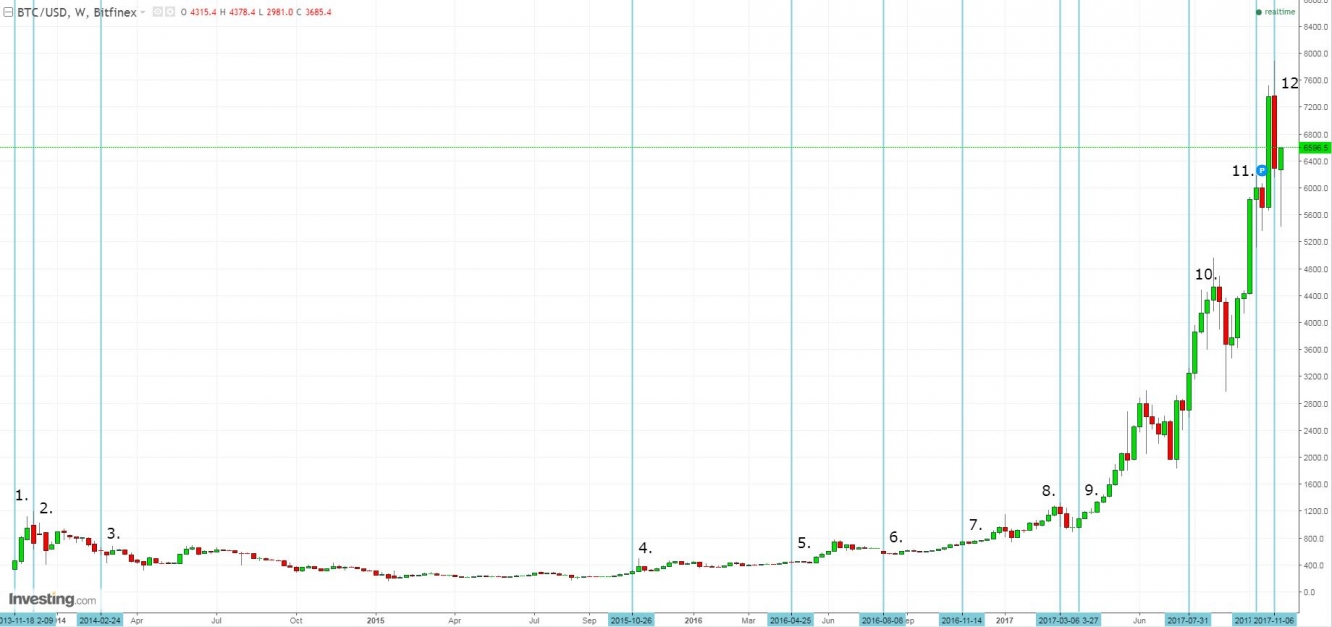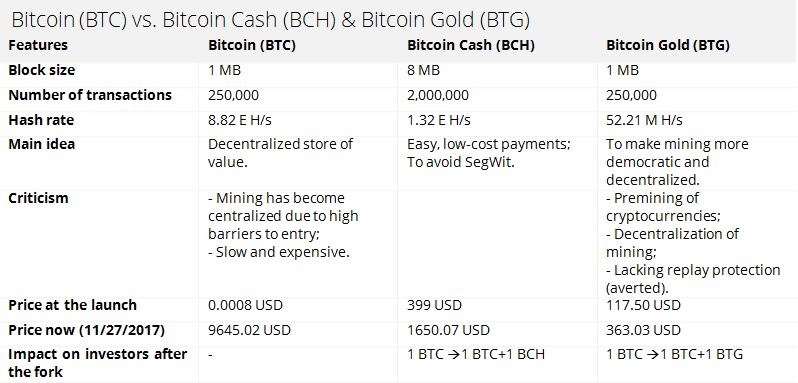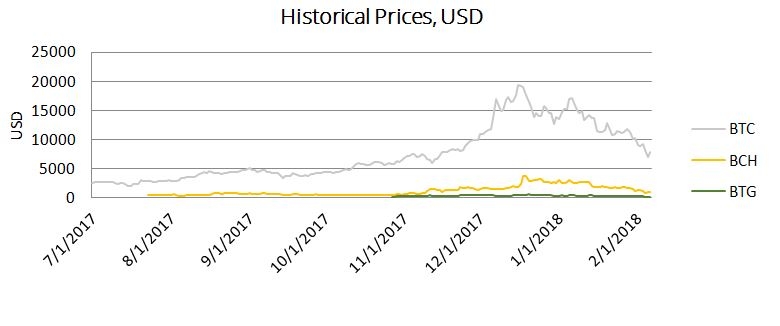Some time ago I published the first part of my Bitcoin analysis overview.
I also promised a second part with a deeper analysis of the price volatility of this 21st-century asset and I think that this is a wonderful moment to publish it as another hard fork known as Bitcoin Private (BTCP) is on its way to join the Bitcoin Cash and Bitcoin Gold.
This article would be incomplete without the analysis of hard forks, but for now, let us look at other factors having an impact on cryptocurrencies prices, such as the acceptability among product and service providers. If people are able to pay with a cryptocurrency for their coffee and other daily activities, it could serve as an actual substitute for traditional currencies. Cryptocurrencies could facilitate travelling (no more currency exchange).
On the other hand, cryptocurrency prices are relatively volatile – this means that either stores would have to change the prices each day for the coffee to have the same value two days in a row or there would be uncontrollable daily inflations and deflations. For example: if you bought a car on 24 October 2017 for 4 bitcoins (4*5,518.85=22,075.4 USD), the same car on 4 November 2017 would have a price of 4*7,387=29,548 USD). But if people won't be able to use cryptocurrency in their day-to-day activities, it will most likely stay as an alternative investment opportunity.
Currently, several countries have banned cryptocurrencies: China (only at an institutional level), Iceland, India, Vietnam, Ecuador, etc. Governments and central banks are unwilling to lose control in terms of fiscal and monetary policies. Other countries officially admit and begin regulating cryptocurrencies. But it is highly imporobable that they could ever accept full replacement of national currencies by cryptocurrencies. Also, fully regulated cryptocurrencies will not be as attractive to investors due to full disclosure, compliance, possible taxes, etc.
In addition to numerous external factors, Bitcoin is also feeling pressure from within the Crypto universe. Although Bitcoin price is advancing, its share of total market capitalization of all cryptocurrencies is decreasing. There are two main reasons for such behaviour:
• A large number of new cryptocurrencies are entering the market;
• Existing currencies are advancing in value.
Since 02/19/2017, when Bitcoin share of the crypto total market capitalization was 86%, it has decreased to 35% on 02/07/18. This results in a compounded annual growth rate of -36.48%. If taking into account the CAGR, in ten years Bitcoin share will be only 0.37% of the total market cap or 97 billion.
It is important to note that the pace at which new Bitcoins are generated constantly decreases as it becomes more and more difficult to mine new units. Currently, the pace at which new Bitcoins are generated decreases at a rate of 38%. If we assume that the outstanding amount of Bitcoins will increase at the same slowing rate, we can expect approximately 18,212,550 BTC outstanding and a price of 1,039 USD per Bitcoin by the year 2027.
While the main factor influencing Bitcoin price is considered to be the growth in popularity, there are various events which seem to have an effect on Bitcoin price. Below is an overview of main events influencing the price of Bitcoin up until November 2017 when Bitcoin faced turbulence related to hard forks.
1. November 20, 2013 – People’s Bank of China announces that people are free to trade Bitcoin.
2. December 5, 2013 – PBoC prohibits trade, insurance and any other service related to Bitcoin for all financial institutions.
3. February 24, 2014 – Mt. Gox closes after “losing” 744,000 BTC.
4. October 22, 2015 – EU declares no VAT on Bitcoin trades.
5. April 27, 2016 – Gaming platform Steam begins accepting Bitcoin as means of payment.
6. August 2, 2016 – Bitfinex, the largest exchange by volume announces that 119,756 BTC have been stolen via a security breach.
7. November 9, 2016 – Financial markets all around the world drop as Donald Trump becomes a president of the US. Meanwhile, Bitcoin increases by 5% over the first 24 hours but later stabilizes.
8. March 10, 2017 – SEC denies an ETF to facilitate the Bitcoin trading.
9. March 28, 2017 – SEC denies another ETF.
10. August 1, 2017 – First fork – Bitcoin splits into Bitcoin (BTC) and Bitcoin cash (BCH).
11. October 24, 2017 – Second fork – Bitcoin splits again creating Bitcoin gold (BTG).
12. November 8, 2017 – Bitcoin postpones the third fork, known as SegWit2x.
After analyzing the above events along with many others, it is safe to say that Bitcoin price is influenced by numerous factors. Security breaches and lost Bitcoins are perceived as a number one risk and Bitcoin prices react accordingly. Another factor that influences Bitcoin price is regulation attempts by governments, central banks and SEC rulings.
Similarly, a positive correlation is seen between Bitcoin price and service providers who announce the possibility to use Bitcoin as a mean of payment. Especially positive price surge was seen during both Bitcoin splits.
This can be connected to the benefits for Bitcoin investors and potential improvements in Bitcoin technology. Respectively, the cancelled third split announced on November 8, provoked a sharp price decline. Interestingly, two previous price corrections in June and September are not connected to any major event. No price drop was observed after Donald Trump was elected to be the US president and all major financial markets felt headwind.
Bitcoin (BTC) vs hard forks
On August 1, 2017, Bitcoin performed an activity called hard fork and as a result, a new version of Bitcoin was created. The new version is called Bitcoin Cash and it is somewhat different from the original Bitcoin. The main reason why Bitcoin Cash was created was to solve Bitcoin’s problem of limited block size – 1MB allowing approximately 250,000 transactions per day. Bitcoin Cash increased the limit to 8MB which allowed increasing the number of transactions to around 2 million per day.
Another hard fork took place on October 25 and Bitcoin Gold was created in the result (it was launched on 11/12/2017). There are different opinions why these activities are carried out and what kind of impact both new cryptocurrencies will have on the traditional Bitcoin. Below are the main differences among all three cryptocurrencies.
Another hard fork was planned on November 16 but was cancelled due to lack of consensus in the Bitcoin community.
The main criticism of hard forks goes to the fact that they compromise the perception of limited supply which is believed to be as one of the main value drivers for Bitcoin. In addition to being somewhat confusing to investors, altcoins created through Bitcoin hard forks are also a potential competition to the Bitcoin and its price. Hard forks are generally carried out in order to improve certain aspects of the original Bitcoin. This way, each new altcoin becomes more technically efficient and compatible in comparison to Bitcoin.
The correlations between BTC:BCH (89%) and BTC:BTG (58%) are significantly positive, meaning that generally when the price of one grows, the price of the other also grows. It should not be perceived as a mutual impact but rather as an overall growth of cryptocurrencies’ market. Meanwhile, if taking a closer look at 11-12 November, we see that there was a common major factor that managed to drive BTC price down by 712 USD losing almost 11% its value and drive both other altcoins’ prices up (381 USD for BCH and 67 USD for BTG) gaining more than 35% each. After the weekend, all three cryptocurrencies started to move closer to their previous levels.
The volatility of Bitcoin price was provoked by an announcement that the previously planned hard fork has been cancelled due to lack of consensus in the Bitcoin community. It is believed that one of the major factors keeping the high value of Bitcoin is its community. Therefore, it is crucially to maintain a united community with a common vision regarding Bitcoin’s future.
Meanwhile, disagreements regarding various aspects have already provoked two hard forks and a similar motion in the future could divide Bitcoin community even further threatening its value and future existence. There is an opinion that Bitcoin Cash could gather a considerable part of Bitcoin community due to its technical features as well as ability to be used as a convenient payment method.
After experiencing such significant appreciation in value and market capitalization for Bitcoin and all other major cryptocurrencies, one might ask is there a reason to invest in traditional financial instruments such as stocks and bonds. In fact, there are several important points to discuss in favour of these more traditional financial instruments:
• It is never a good idea to put all your money in one asset type. Diversifying portfolio is a way how you can diminish your losses in case of a market crash while earning a decent profit from investments in different asset types.
• Also if investing only one part of your portfolio in cryptocurrencies, this alternative asset type poses a greater risk than virtually any other instrument due to lack of historical data, lack of knowledge of how cryptocurrencies actually work and how will they behave during market turbulence, and finally, the increasing supply and demand of cryptocurrencies lead to inferior and high-risk investment opportunities.
• High-risk financial institutions can afford to invest in more risky assets. Meanwhile, the field of cryptocurrencies is highly unregulated therefore poses also a transactional risk, unsolved issues of getting hacked and the unclear position from the governments and other regulating parties rise uncertainties that do not seem to cease.



